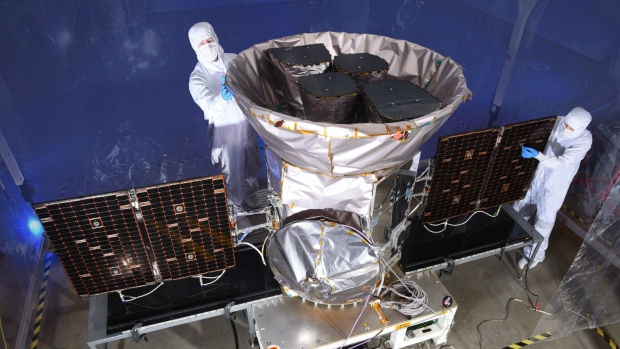
Tess spacecraft to prowl for planets? NASA’s newest planet hunter, set to lift off early next week, will prowl for planets around the closest, brightest stars.
The newfound worlds found by the Tess spacecraft eventually will become prime targets for future telescopes looking to tease out any signs of life.
It will be the most extensive survey of its kind from orbit.
Scientists expect Tess to find thousands of exoplanets – the term for planets outside our solar system.
“All astronomers for centuries to come are really going to focus on these objects,” said the mission’s chief scientist George Ricker of Massachusetts Institute of Technology.
“This is really a mission for the ages.”
NASA’s astrophysics director, Paul Hertz, said missions like Tess will help answer whether we’re alone – or just lucky enough to have “the best prime real estate in the galaxy.”
Tess – short for Transiting Exoplanet Survey Satellite – is the heir apparent to the Kepler Space Telescope , the pioneer of planetary census. Kepler’s fuel tank is running precariously low after nine years of flight, and NASA expects it to shut down within months.
The exoplanet count, from all observatories in space and on Earth over the past couple of decades, stands at more than 3700 confirmed with 4500 on the strong contender list.
About 50 are believed to potentially habitable. They have the right size and the right orbit of their star to support surface water and, at least theoretically, to support life.
Most of the Kepler-identified planets are so far away that it would take monster-size telescopes to examine them more. So astronomers want to focus on stars that are vastly brighter and closer to home – close enough for NASA’s upcoming James Webb Space Telescope to scrutinise the atmospheres of planets lurking in their sun’s shadows.
MIT’s Sara Seager, an astrophysicist who has dedicated her life to finding another Earth, imagines water worlds waiting to be explored. Perhaps hot super Earths with lakes of liquid lava. Maybe even rocky or icy planets with thin atmospheres reminiscent of Earth.
“It’s not “Interstellar” or “Arrival.” Not yet anyway,” she said, referring to the recent hit science-fiction films.
The total mission price tag for Tess is $US337 million ($A435 million).
The 362kg Tess will ride a SpaceX Falcon 9 rocket from Cape Canaveral Air Force Station with lift-off scheduled for Monday. Its eventual orbit of Earth will stretch all the way to the orbit of the moon.
Tess’ four cameras will zoom in on red dwarf stars in our cosmic backyard.
A planet should cause a slight, brief dip in its star’s brightness as it passes right in front. Tess will detect any such blips.
Scientists like to think robotic explorers would be launched from Earth for closer inspections to search for life, though the technology for interstellar travel has yet to be developed.













